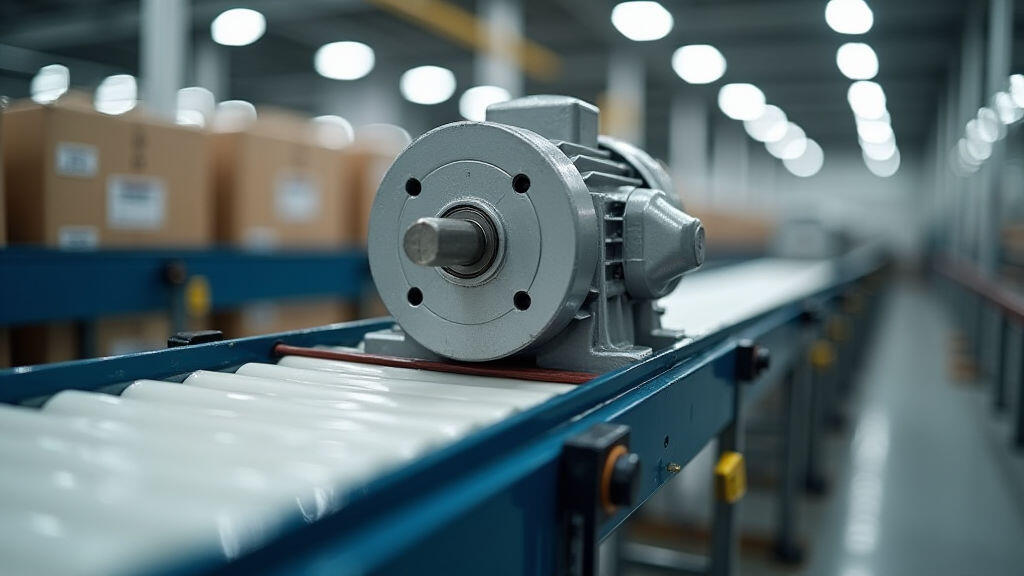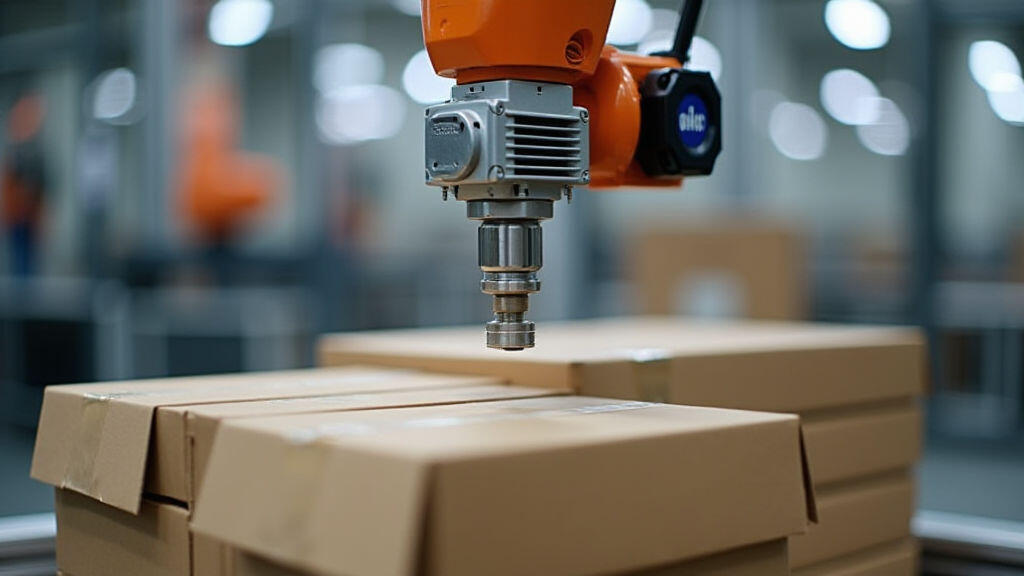How Packaging Equipment Can Achieve Cost Reduction and Efficiency Improvement by Differentiating Between Gear Motors and Servo Motors
In today's fast-paced global market, the packaging industry faces relentless pressure to optimize operations. Meeting ever-increasing consumer demand, managing fluctuating raw material costs, and adhering to stringent sustainability goals require a laser focus on efficiency and cost reduction. Packaging equipment sits at the heart of this challenge, and the choice of motor technology plays a pivotal role in achieving these objectives. Specifically, the decision between gear motors and servo motors significantly impacts a packaging line's performance, lifecycle costs, and overall profitability. This article will delve into the differences between these two motor types, exploring how strategic selection can unlock substantial cost savings and efficiency improvements for packaging manufacturers.
The Traditional Approach: Gear Motors - Reliable, but with Limitations
Gear motors have long been the workhorses of the packaging industry. They're known for their simplicity, robustness, and relatively low initial cost. Essentially, a gear motor combines a motor with a gearbox to reduce rotational speed and increase torque. This makes them ideal for applications requiring high torque output at lower speeds, such as conveyors, filling machines, and sealing equipment.

Cost Advantages of Gear Motors:
- Lower Initial Cost: Gear motors are generally more affordable to purchase than servo motors. This makes them a viable option for companies with tight budgets or those implementing older packaging line upgrades.
- Simplicity & Reliability: Their straightforward design translates to easier maintenance and a generally longer lifespan, especially in demanding industrial environments.
- High Torque Density: Gearboxes effectively multiply motor torque, making them suitable for applications requiring significant power.
Limitations of Gear Motors:
Despite these advantages, gear motors have significant drawbacks that impact long-term cost and efficiency:
- Lower Energy Efficiency: The gear reduction process inevitably introduces energy losses due to friction. This results in lower overall efficiency compared to servo motors, leading to higher energy bills, especially concerning the rising cost of electricity due to factors like the energy crisis and global economic uncertainties.
- Limited Precision & Control: Gear motors are not designed for precise positioning or dynamic control. Adjusting speed and position is more challenging, potentially impacting packaging accuracy and leading to material waste. In the current era of e-commerce, where precise dimensional tolerances are critical for shipping and storage, this can be a major concern.
- Noise & Vibration: The gear reduction process can generate noise and vibration, leading to a less pleasant working environment and potentially impacting the lifespan of surrounding equipment.
- Reduced Responsiveness: Gear motors typically have slower response times compared to servo motors, hindering the ability to rapidly adapt to changes in production schedules or demand.
The Future of Packaging: Servo Motors - Precision, Efficiency, and Flexibility
Servo motors represent a more advanced motor technology, offering superior performance and control. Unlike gear motors, servo motors use a closed-loop system with a feedback mechanism (typically an encoder) to precisely control position, speed, and torque. This allows for highly accurate and dynamic operation.
Benefits of Servo Motors in Packaging:
- Superior Energy Efficiency: Servo motors are significantly more energy-efficient than gear motors, particularly when considering variable speed and torque requirements. Advanced motor control algorithms optimize power consumption, leading to substantial savings on energy costs. Data from industry reports show servo motors can achieve energy savings of up to 40% compared to gear motor-based systems.
- High Precision & Control: Servo motors excel in applications requiring precise positioning, repeatability, and dynamic control. This is crucial for tasks like precise filling, labeling, and product placement, minimizing material waste and ensuring consistent product quality. The increasing popularity of automated packaging lines and the demands of customizable packaging necessitate the precision offered by servo motors.
- Reduced Noise & Vibration: Servo motors are generally quieter and produce less vibration than gear motors, improving the working environment.
- Faster Response Times & Adaptability: Servo motors provide quick response times and can readily adapt to changing production demands. This is essential for flexible packaging lines that need to handle a variety of product sizes and configurations.
- Predictive Maintenance Capabilities: Modern servo motor systems often integrate with IoT platforms, enabling predictive maintenance. By monitoring motor performance data, potential failures can be identified and addressed before they occur, minimizing downtime and extending equipment lifespan.

Cost Considerations of Servo Motors:
While the initial cost of servo motors is typically higher than that of gear motors, the long-term total cost of ownership (TCO) is often lower due to:
- Reduced Energy Costs: Significant energy savings over the motor’s lifespan.
- Lower Maintenance Costs: Better reliability and predictive maintenance capabilities.
- Reduced Material Waste: Improved precision minimizes product damage and material usage.
- Increased Productivity: Faster processing speeds and reduced downtime.
Making the Right Choice: A Strategic Approach
The decision between gear motors and servo motors isn’t a one-size-fits-all proposition. A thorough assessment of the specific packaging application is essential. Consider the following factors:
- Required Torque and Speed: Assess the torque and speed requirements of the application.
- Precision & Accuracy Needs: Determine the level of precision required for the task.
- Energy Consumption Goals: Factor in the importance of energy efficiency and potential savings.
- Budget Constraints: Consider the initial investment cost and the long-term TCO.
- Future Flexibility: Evaluate the need for adaptability to changing production requirements.
MES-Drive offers a comprehensive range of both gear motors and servo motors, along with expert consultation to help businesses make informed decisions. Our team can analyze individual packaging line requirements and recommend the most cost-effective and efficient motor solution. We prioritize providing systems that integrate with Industry 4.0 initiatives, supporting real-time data analysis, predictive maintenance, and increased operational transparency.
Conclusion: Embracing the Servo Motor Revolution
In conclusion, while gear motors have traditionally held a dominant position in the packaging industry, servo motors are rapidly emerging as the preferred choice for applications demanding precision, efficiency, and flexibility. The shift towards servo motors isn't just about adopting new technology; it's about optimizing operational costs, reducing environmental impact, and achieving a competitive edge in today’s dynamic market.
With the escalating focus on sustainability initiatives like reducing carbon footprints and embracing circular economy principles – spurred by events such as COP28 and increasing consumer demand for eco-friendly packaging – the adoption of energy-efficient servo motors is becoming increasingly imperative. The power of IoT and AI, integrated with sophisticated servo motor control systems, is paving the way for truly intelligent packaging lines. As the packaging industry evolves to meet the challenges of e-commerce, automation, and sustainability, embracing servo motor technology is not just a smart investment; it's a strategic necessity. The future of packaging efficiency is powered by precision, and that’s the power of servo motors.



Leave A Reply
Your email address will not be published. Required fiels are marked